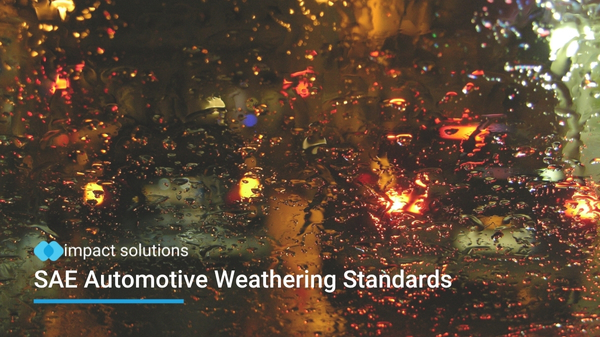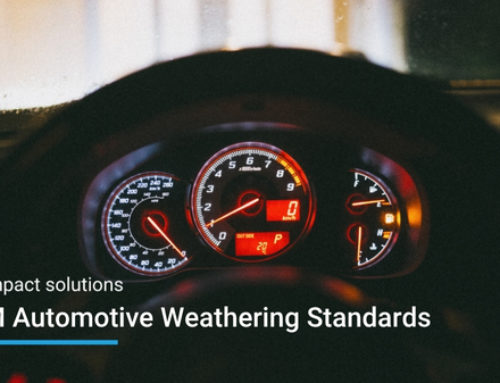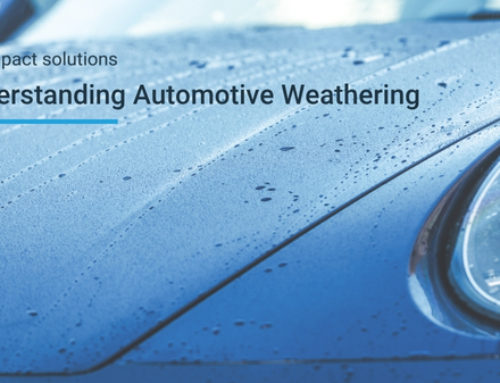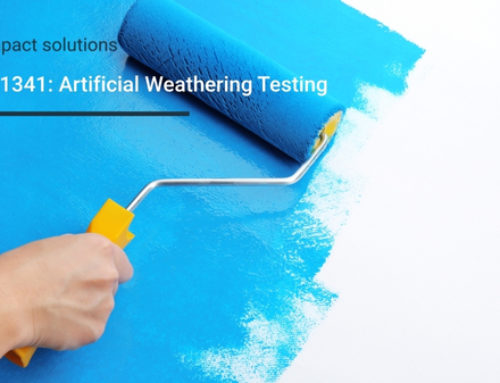When automotive manufacturers design interior and exterior components, one question always drives material selection: how will this part perform after years of sun, heat, and humidity exposure? That's where SAE automotive weathering standards come in.
Developed by the Society of Automotive Engineers (SAE), standards like SAE J2020, SAE J2412, and SAE J2527 outline the methods for exposing materials to artificial weathering, replicating years of environmental stress in a matter of weeks. These tests are essential for validating the performance of paints, coatings, plastics, and textiles before they ever reach the road.
Why Weathering Testing Matters in Automotive Applications
Every automotive surface, from a dashboard panel to an exterior mirror housing, must withstand constant UV radiation, temperature fluctuations, and moisture. Prolonged exposure leads to:
- Fading and colour change
- Gloss loss
- Cracking or chalking
- Loss of mechanical properties
Without accelerated testing, it would take years to understand how a material or coating performs. SAE weathering standards use fluorescent UV and xenon arc exposure to simulate these real-world effects quickly and consistently.
Overview of the Key SAE Weathering Standards
SAE J2020 – Fluorescent UV Exposure for Automotive Materials
SAE J2020 specifies the use of fluorescent UV lamps to expose materials to alternating cycles of UV light and condensation.
It's most often used for:
- Thermoplastics
- Coated surfaces
- Interior materials
The goal is to simulate long-term sunlight and dew exposure. The test reveals early signs of degradation such as embrittlement or discolouration. It's cost-effective, repeatable, and ideal for preliminary screening of materials.
SAE J2412 – Xenon Arc Exposure for Interior Materials
SAE J2412 uses a xenon arc light source, which closely replicates full-spectrum sunlight including UV, visible, and infrared energy.
This standard focuses on interior components, such as:
- Instrument panels
- Door trims
- Seat fabrics and leather
Testing chambers control temperature, humidity, and irradiance, exposing samples to a defined number of kilojoules per square meter. Following this method allows prediction of how interior colours and finishes will fade or change under years of windscreen-filtered sunlight.
SAE J2527 – Xenon Arc Exposure for Exterior Coatings
SAE J2527 is the exterior counterpart to J2412. It simulates outdoor weathering with full sunlight exposure, temperature cycling, and water spray.
It's commonly used for:
- Automotive paints and clear coats
- Exterior plastics
- Trim and composite panels
This test determines how well exterior surfaces resist colour fading, gloss loss, and surface cracking; the key indicators of long-term durability and aesthetic performance.
Choosing the Right SAE Standard
Each SAE weathering method serves a distinct purpose:
| Standard | Light Source | Typical Application | Test Focus |
| SAE J2020 | Fluorescent UV | General materials, plastics | UV & moisture exposure |
| SAE J2412 | Xenon arc | Interiors | Fade resistance & colour stability |
| SAE J2527 | Xenon arc | Exteriors | Gloss, cracking, and coating durability |
Selecting the right method depends on the part location (interior/exterior) and the exposure conditions your product will face.
Ensuring Compliance and Global Alignment
Although SAE standards are most common in North America, they often correlate with international equivalents such as ISO 4892-2 (xenon arc) and ISO 4892-3 (fluorescent UV).
Testing to both SAE and ISO helps ensure global material consistency, especially for OEM suppliers serving worldwide markets.
SAE J2020, J2412, and J2527 remain benchmark weathering standards for automotive materials. They allow manufacturers to ensure that every interior surface, plastic panel, and painted finish can withstand the relentless effects of UV radiation, moisture, and heat.
By combining SAE testing with proper quality control and international alignment (ISO or PV standards), automotive suppliers can confidently deliver durable, high-performance components that meet OEM and consumer expectations.
Frequently Asked Questions
What's the difference between SAE J2412 and J2527?
Both use xenon arc exposure, but J2412 focuses on interior materials where sunlight passes through glass, while J2527 targets exterior coatings exposed to full sunlight and weather conditions.
How long do SAE weathering tests take?
Typical test durations range from 500 to 2,000 hours, depending on the material, performance requirements, and OEM specification. Some accelerated protocols simulate up to five years of real-world exposure.
Can SAE tests replace outdoor exposure testing?
No, they complement it. Accelerated laboratory weathering predicts trends quickly, but real-world outdoor exposure is still used to validate results, especially for new formulations or critical exterior components.





